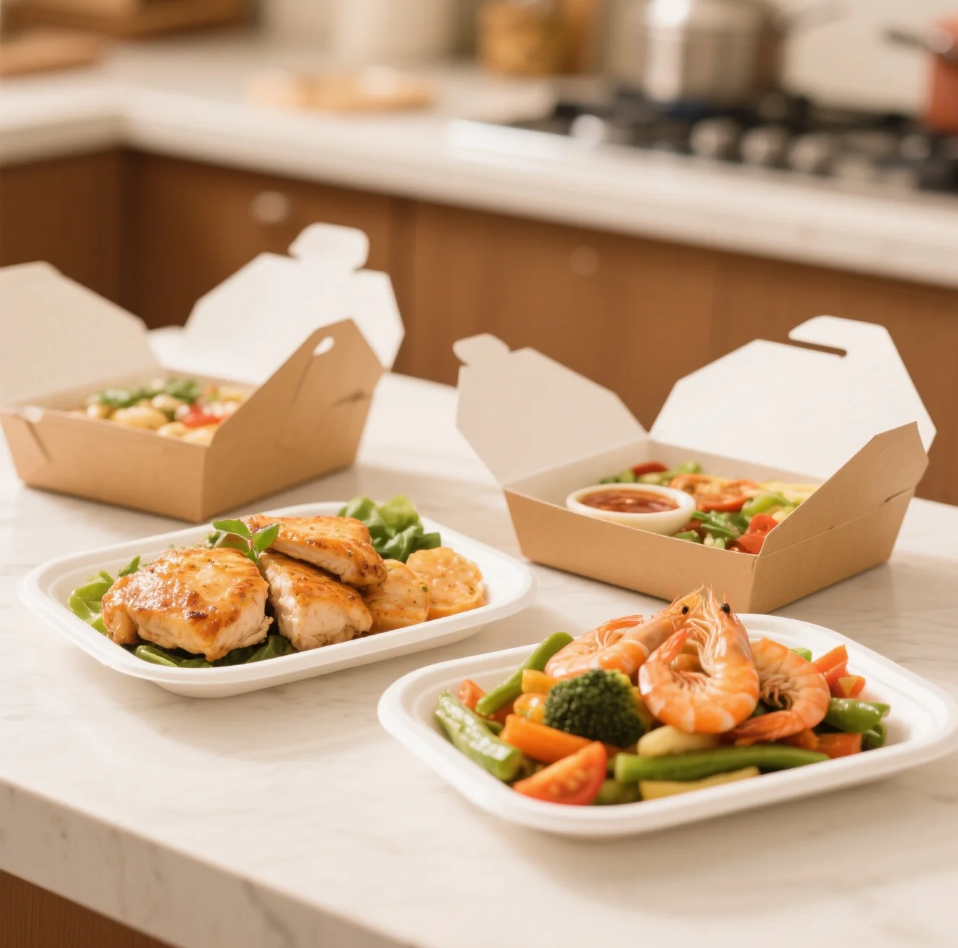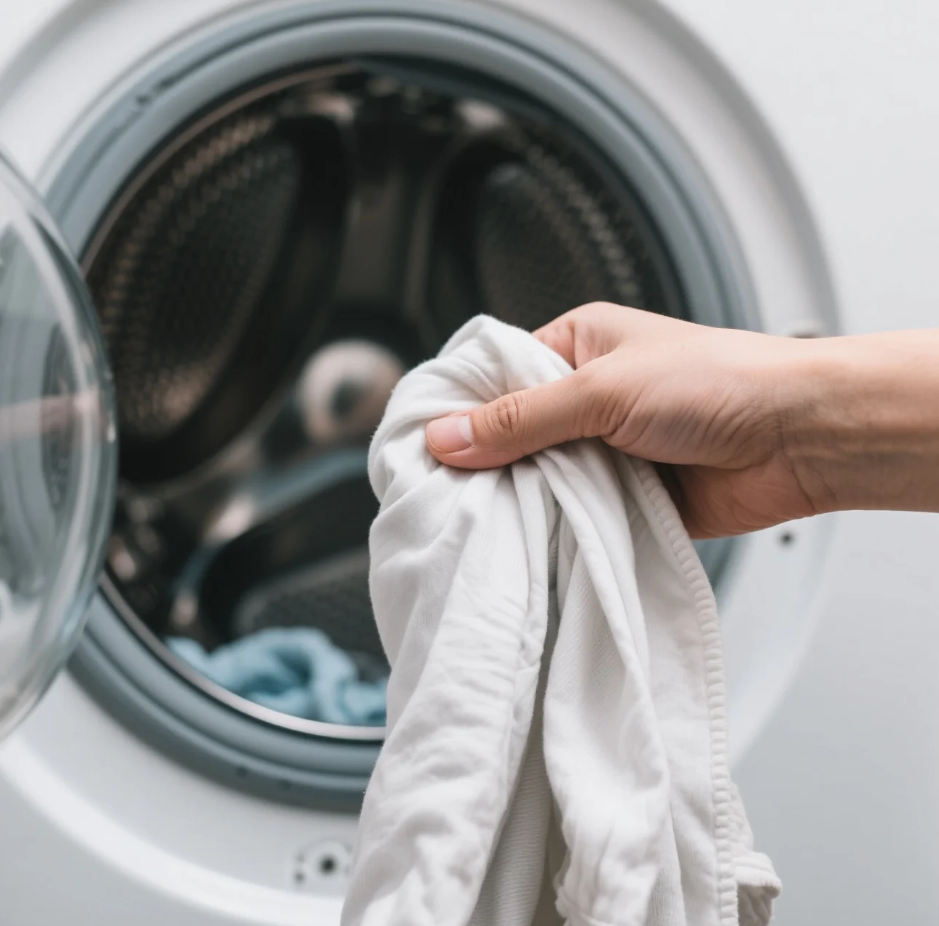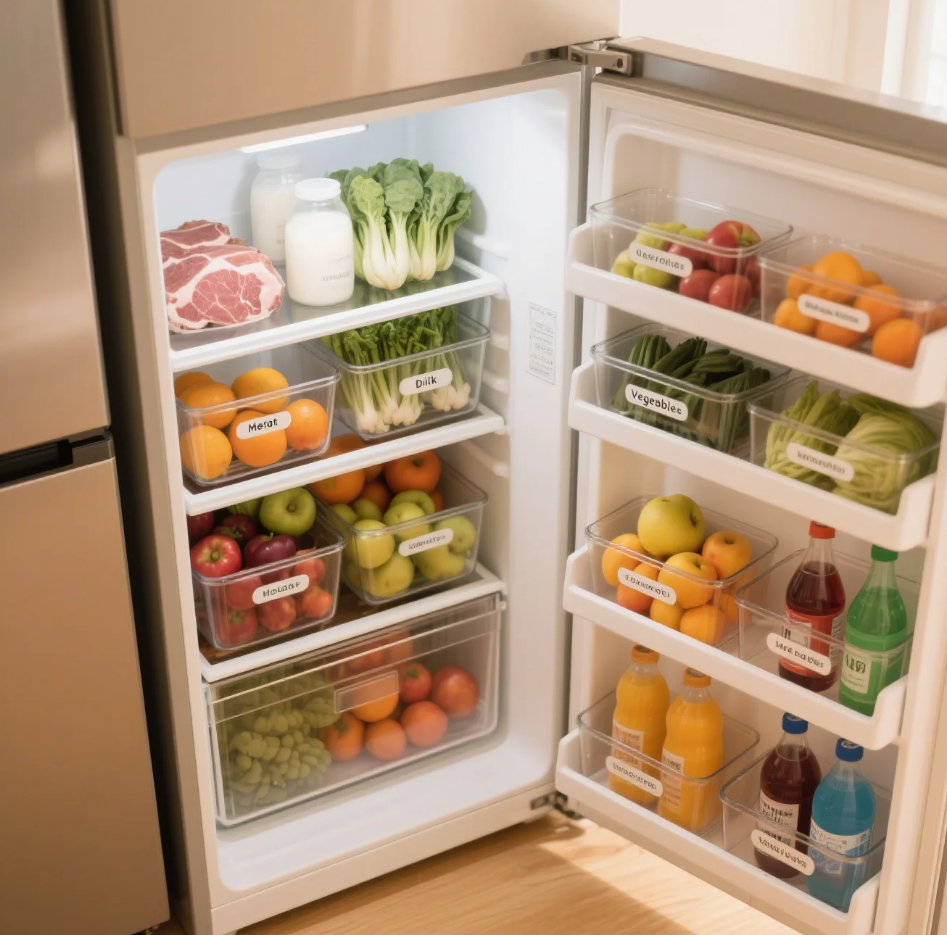
Because Nobody Wants Their Cheesecake Tasting Like Leftover Garlic Chicken 🧄🍰😱
Let’s face it — your fridge is a mystery box.
There’s that jar of mustard you bought in 2020, an unidentifiable sauce that’s either barbecue or battery acid, and a Tupperware you haven’t opened in weeks because… well, you value your sense of smell.
Also, why does your orange juice taste suspiciously like onions?
Welcome to the world of Fridge Chaos™, where odors party like college freshmen, food expires while hiding in plain sight, and your electricity bill silently weeps.
But don’t worry. With just a few smart organization hacks, you can:
- Save money on energy bills ⚡
- Extend the life of your groceries 🥬
- Stop playing “What’s That Smell?” every time you open the door 🤢
Ready to become a cold-storage genius? Let’s cool things down the smart way.
The Real Problem: Fridges Are Not Fancy Dumping Grounds
Contrary to popular belief, your fridge isn’t a closet for your laziness. It has zones — areas that are colder, warmer, drier, or more humid — all designed to store different foods more efficiently.
And yet, many of us store fish next to cake, onions next to strawberries, and milk in the door (WHY?!). That’s not just disorganized — it’s a crime against refrigeration.
Let’s fix it.
Step 1: Know Your Fridge’s “Climate Zones” 🌡️
Think of your fridge like a tiny apartment with different roommates (aka foods) that don’t always get along.
🔽 Bottom Shelf – Coldest Part
- Ideal for: Raw meat, fish, poultry
- Why: Cold air sinks, and this is usually the chilliest zone.
- Pro Tip: Always store meat in a tray or container to catch drips. This prevents the “raw chicken waterfall” effect.
🔼 Top Shelf – Consistently Cool
- Ideal for: Leftovers, ready-to-eat items like yogurt or snacks
- Why: This area stays stable in temperature, making it perfect for foods that need gentle, consistent chilling.
🧀 Middle Shelves – Cheese, Eggs, Dairy
- Ideal for: Milk, eggs, butter, cheese
- Pro Tip: Eggs don’t belong in the door — that’s the warmest part of the fridge. Don’t trust those egg-shaped slots!
🚪 Fridge Door – Warmest Area
- Ideal for: Condiments, jams, juice (not milk!)
- Why: The door gets opened constantly. Putting milk here is like parking ice cream in the sun.
🥬 Crisper Drawers – Humidity Control Zone
Most fridges have two drawers. Use the high-humidity drawer for leafy greens and herbs, and the low-humidity drawer for fruits.
Why it matters:
- High humidity prevents wilting.
- Low humidity keeps fruits from getting moldy or fermenty (yes, that’s a word now).
Step 2: The Secret Weapon – Airtight Containers 💡
Want to stop smell mix-ups? Say hello to your new BFFs: airtight containers.
Why they rock:
- No more onion-scented cheesecake.
- Keeps moisture in (for freshness) or out (to avoid sogginess).
- Stackable = space-saving = Tetris master.
Bonus Hack: Label everything. Not because you’ll forget what’s inside… okay yes, exactly because of that.
Step 3: Shelf-by-Shelf Reorg Plan 📦
Let’s get tactical. Here’s how to reorganize your fridge right now:
🔝 Top Shelf (Consistent Temp)
- Leftovers in clear containers
- Yogurt, deli meats
- Cooked meals, casseroles
Keep it clutter-free so nothing goes forgotten or fuzzy.
🔜 Middle Shelf (Easy Access Zone)
- Milk (if your middle shelf is cold enough)
- Cheese in sealed bags or boxes
- Eggs in cartons, not the door
- Meal preps or snacks you want to grab quickly
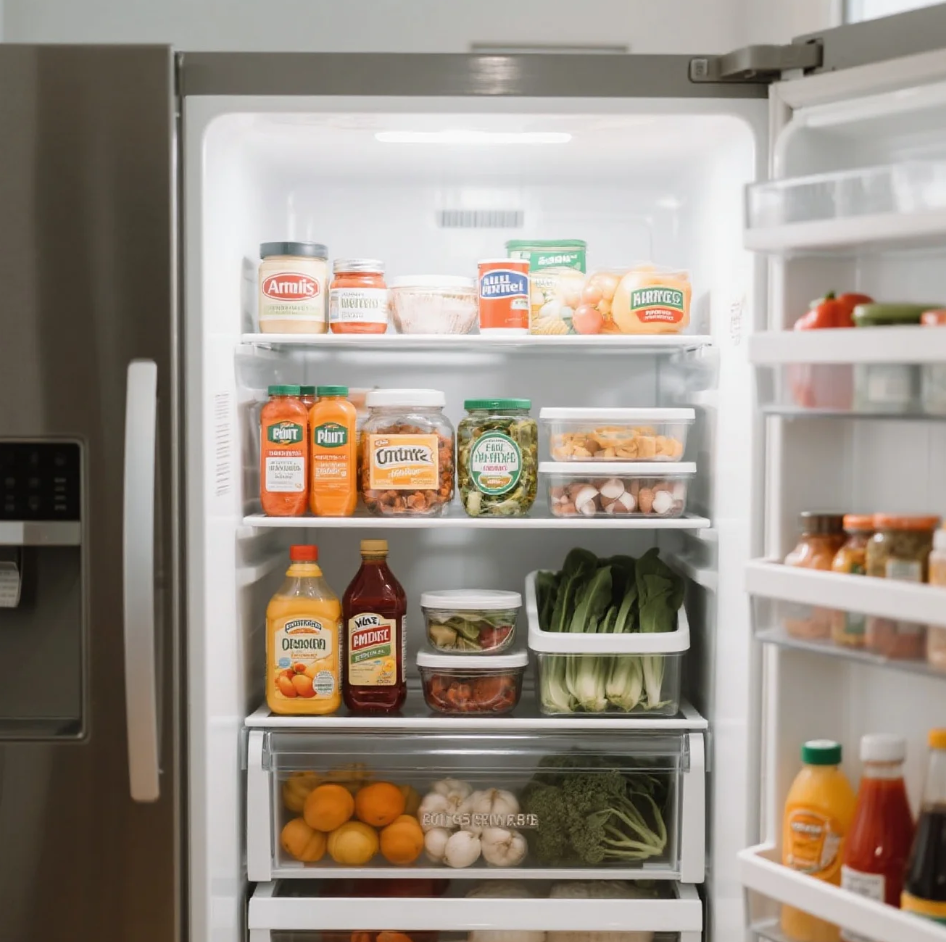
🔻 Bottom Shelf (Meat Locker)
- Raw meats in plastic bins or trays
- Fish wrapped in butcher paper or airtight bags
Never store meat above other items. Gravity exists, and it’s not on your side.
🧊 Crisper Drawers
- Left drawer (High Humidity): Spinach, herbs, broccoli, lettuce
- Right drawer (Low Humidity): Apples, grapes, citrus, avocados
Divide and conquer: Don’t mix veggies and fruits. They have beef. (Metaphorically.)
🚪 Fridge Door (The Danger Zone)
- Mustard, ketchup, hot sauce
- Pickles, jams, juice
- Butter or margarine
Repeat after me: MILK DOES NOT LIVE HERE.
Step 4: Stop the Smell Madness 🧅🧄🍓
Your fridge shouldn’t smell like garlic-scented strawberries. Here’s how to prevent the odor orgy:
1. Baking Soda Bomb
Put an open box of baking soda on a shelf to absorb funky smells.
2. DIY Coffee Deodorizer
Place a bowl of unused coffee grounds inside. It neutralizes odors and smells like a cozy café.
3. Activated Charcoal
Cheap, effective, and mysteriously powerful. Like Batman, but for smells.
Step 5: Save That Sweet, Sweet Energy 💰⚡
Want a fridge that doesn’t suck your wallet dry? Here’s how:
- Don’t overcrowd: Airflow matters!
- Let hot food cool first before placing inside.
- Keep door seals clean and tight – a loose seal is basically an open window.
- Defrost your freezer regularly if it’s not frost-free. Ice build-up = energy hog.
- Set the right temp:
- Fridge: 37°F (3°C)
- Freezer: 0°F (-18°C)
Bonus Section: Fridge Habits That Change the Game 🧠✨
- Use clear bins for each shelf (like “Snacks,” “Dairy,” “Lunchbox Stuff”)
- First In, First Out (FIFO): Rotate your food. Don’t let the old stuff get shoved to Narnia.
- Lazy Susan for sauces: No more soy sauce hiding behind the mayo.
- Wipe spills ASAP: That salsa leak isn’t aging like fine wine.
Conclusion: Your Future Is Chill (and Organized)
Reorganizing your fridge might sound like a boring chore, but it’s honestly a game changer. You’ll reduce food waste, save money, avoid terrifying odors, and — dare we say it — feel a weird sense of joy every time you open your beautifully arranged fridge.
So go ahead, give that mustard from 2020 the boot. Reclaim your cold kingdom.
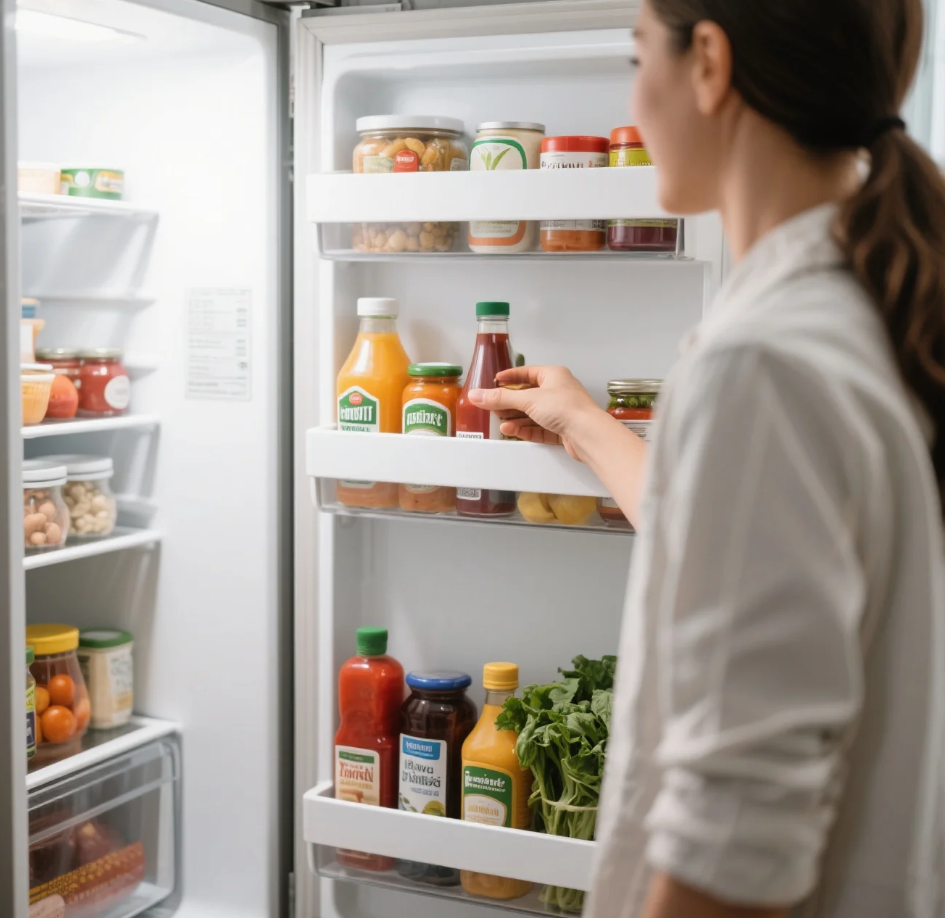
Found this fridge-fix guide cool? 😎 Share it with your messy-fridge friends and start a revolution of freshness.
And don’t forget to follow Yaptalk.top for more weirdly helpful life hacks that’ll make your mom proud and your electricity bill shrink.
Got a fridge hack that changed your life? Drop it in the comments — unless it involves duct tape. We don’t talk about that one.
